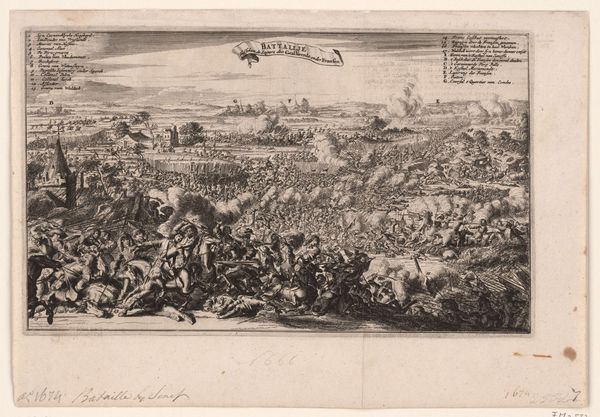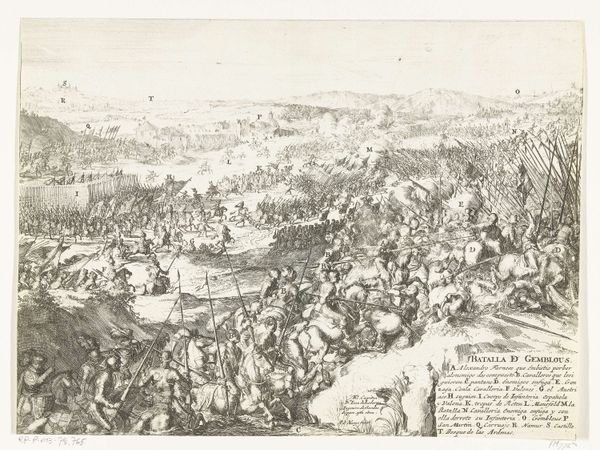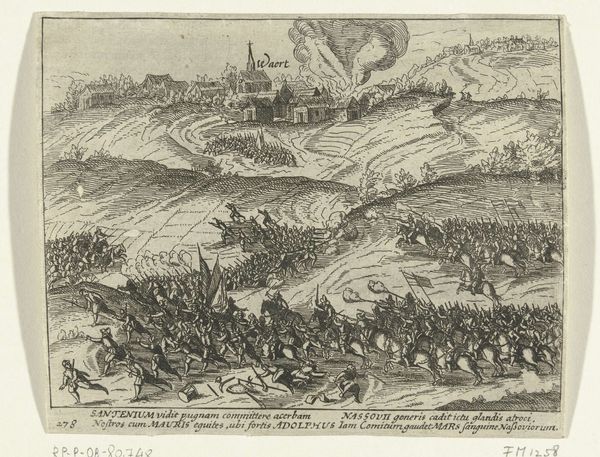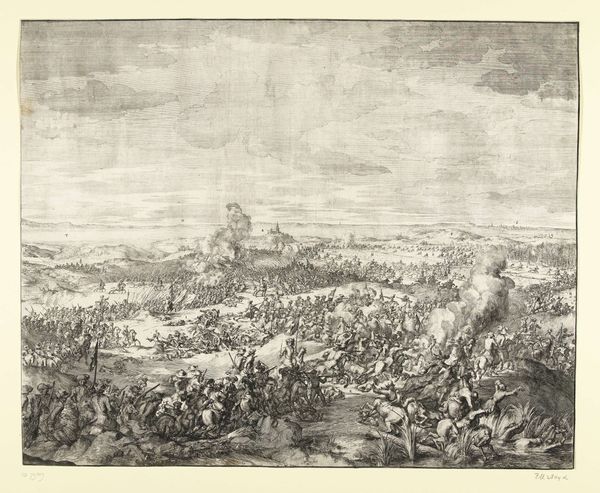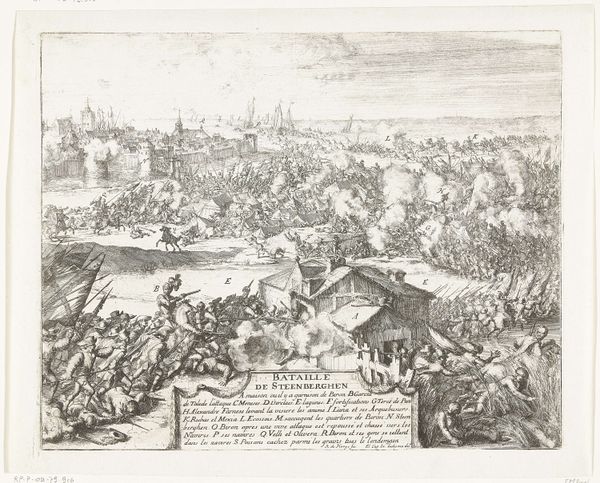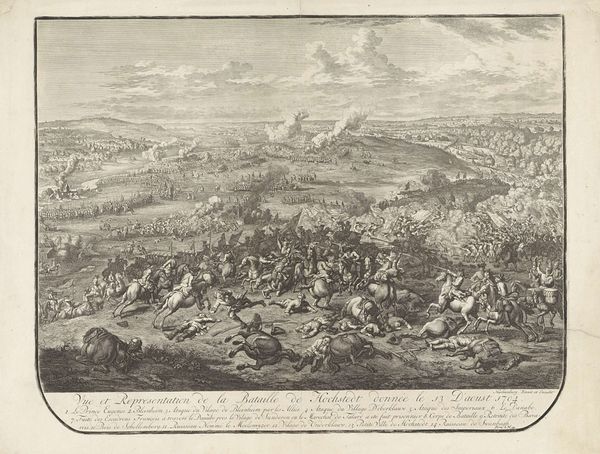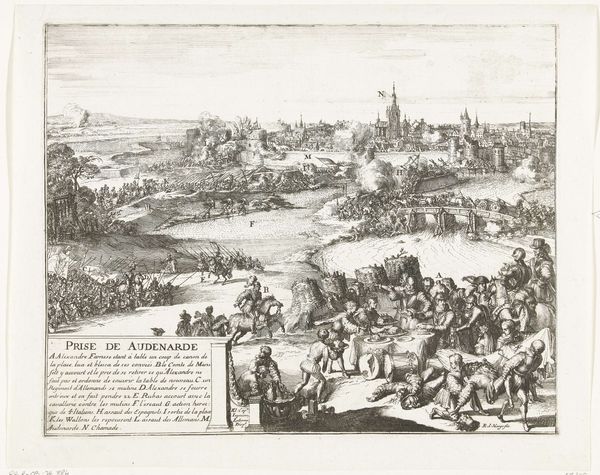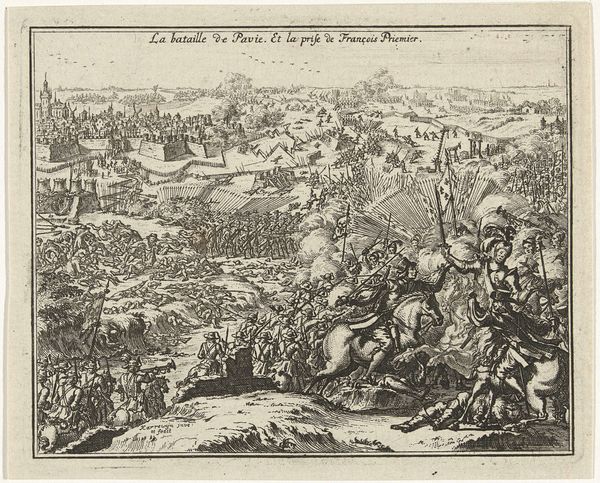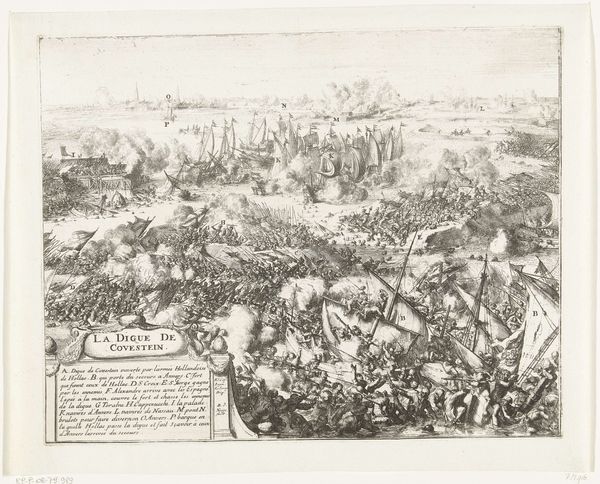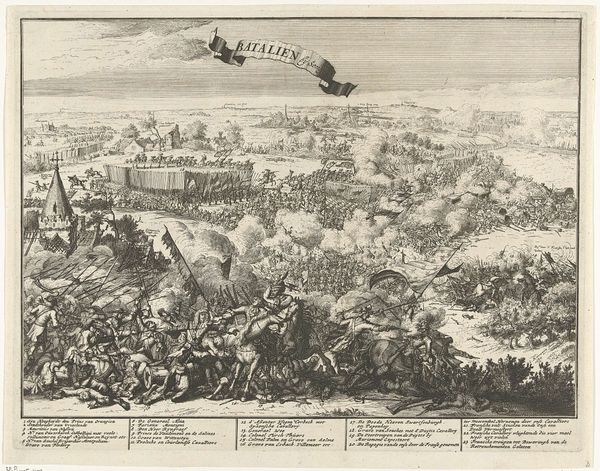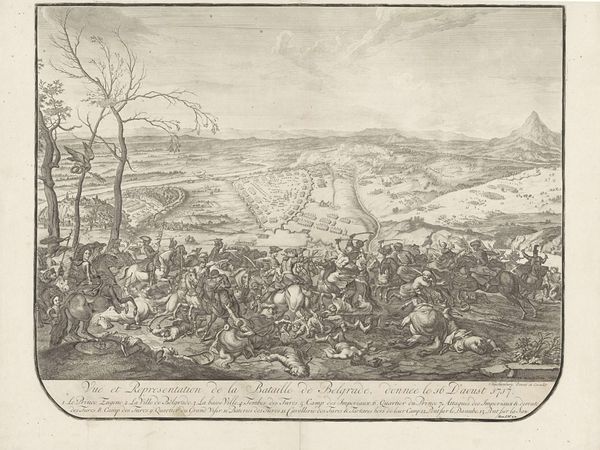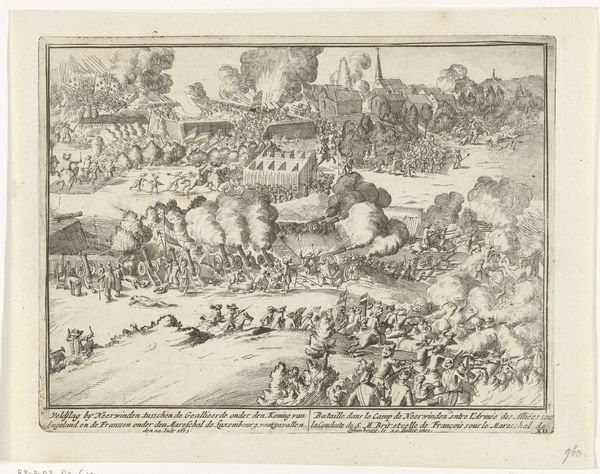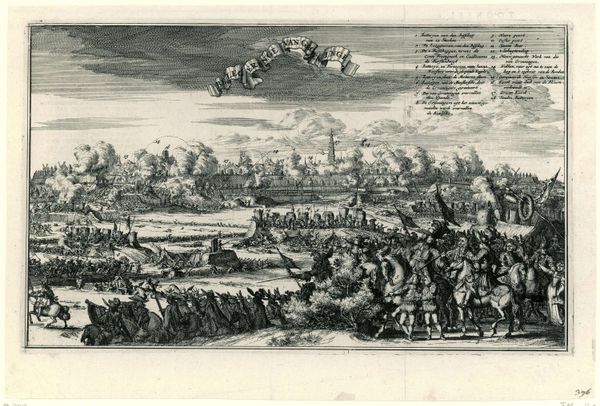
print, engraving
#
narrative-art
#
baroque
# print
#
old engraving style
#
landscape
#
line
#
history-painting
#
engraving
Dimensions: height 302 mm, width 438 mm, height 414 mm, height 275 mm
Copyright: Rijks Museum: Open Domain
Curator: Welcome. Today, we'll be discussing "Slag bij Seneffe, 1674", a fascinating engraving by Romeyn de Hooghe currently housed at the Rijksmuseum. Editor: Immediately, the sheer busyness strikes me. A frenetic energy seems to emanate from the chaotic clash depicted. It’s almost overwhelming in its density of figures and details. Curator: Indeed. De Hooghe's mastery of line is on full display here. Note how he employs dense hatching to create tonal variation and a sense of depth, drawing the eye from the foreground melee to the distant horizon. Consider the structural significance of the line itself, its capacity to both define forms and convey movement. Editor: And a horrifying movement it is. It is impossible to ignore how romanticizing such battles promotes violence as spectacle, masking the trauma inflicted on the lower classes, essentially used as canon fodder by wealthy European houses. Curator: From a formal perspective, the dramatic diagonal composition enhances this sense of dynamism and conflict. The artist uses visual cues to lead the eye from one group to another across the scene, effectively mirroring the fluid and unpredictable nature of battle itself. Editor: That elevated viewpoint serves a very specific purpose. By showcasing the full breadth of the conflict, the artist implicitly condones the brutal acts that come with land domination and solidifying state power in the early modern world. It is meant to inspire awe in the viewer, rather than horror at the real cost of such maneuvers. The artist presents history with a strong, self-interested bias. Curator: Semiotically, one might interpret the figures and objects within the image as signifiers within a complex system. Each element—the weapons, the banners, the fallen soldiers—contributes to a broader narrative about power, conflict, and the human condition. Editor: Looking at this print through a more critical lens reveals its function as political propaganda. This work not only documents the battle but, also serves as an instrument for justifying the conflicts and, in effect, sanitizing violence. Curator: An important caveat. On the other hand, De Hooghe’s treatment of line and mass opens avenues to further visual readings. The piece remains visually compelling even centuries later. Editor: Despite the intricate detailing and composition, the artwork reflects a difficult truth of its time, serving as both an historical record and, also, a monument to statecraft by violence. Curator: Ultimately, engagement with this work offers profound insights. Editor: A stark reminder to scrutinize the visual narratives that shape our understanding.
Comments
No comments
Be the first to comment and join the conversation on the ultimate creative platform.
